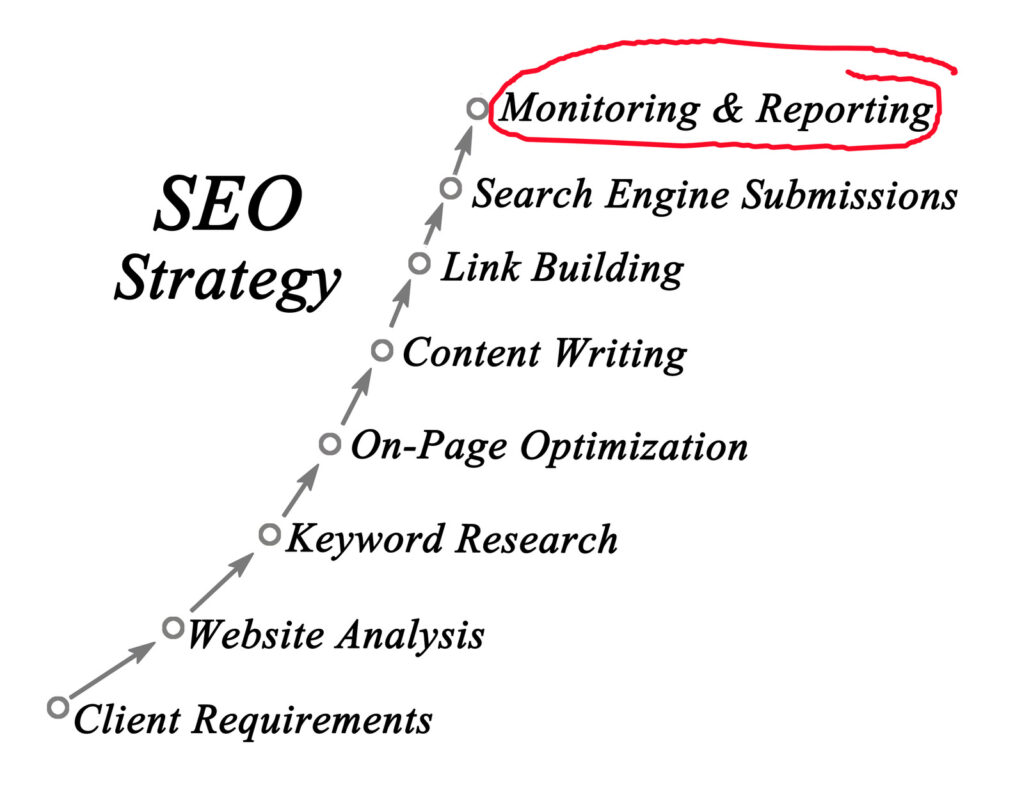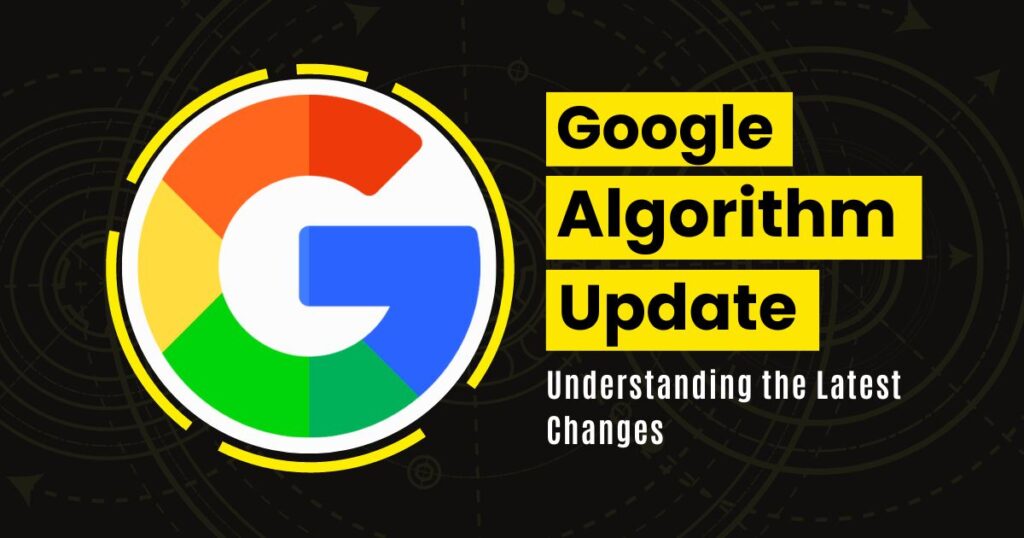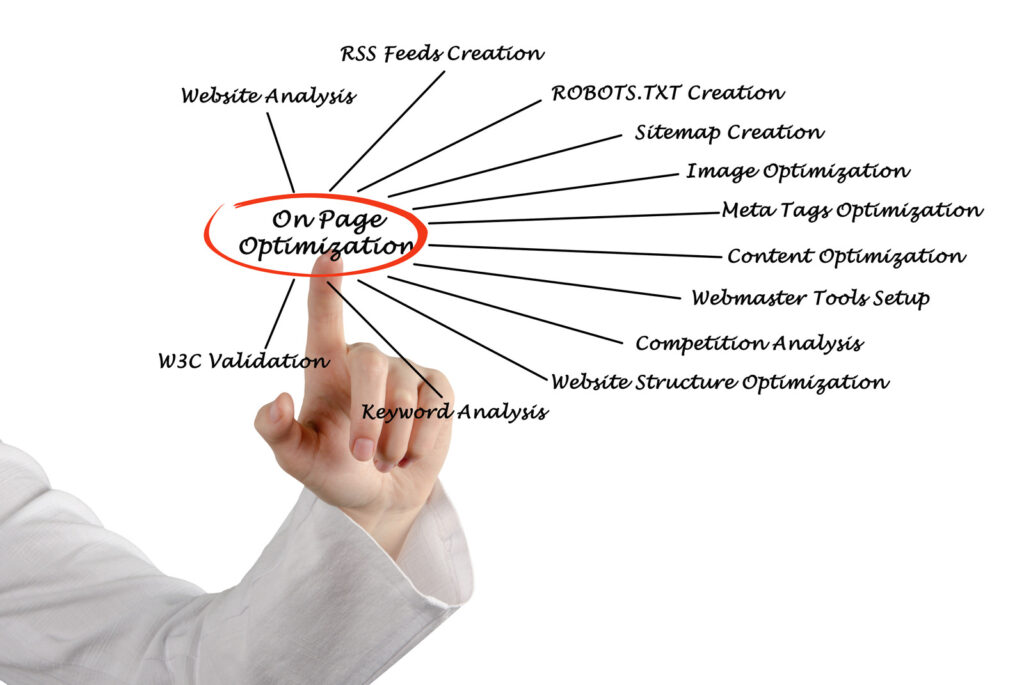SEO Key Takeaways
- Implementing SEO strategies can significantly improve your website’s visibility and ranking on search engine results pages.
- Understanding the importance of keywords, meta descriptions, and high-quality content, and optimizing your site for search engines is crucial for effective SEO.
- Utilize white hat SEO techniques to ensure long-term success and avoid penalties from search engines on your site.
- Tailoring your SEO strategies to include localized keywords and content can attract local customers and enhance your online presence within specific regions.
- Regularly review and update your site’s SEO strategy to adapt to changes in search engine algorithms and stay ahead of competitors.
Ever wondered how webmasters can boost their online visibility and attract organic traffic through effective content marketing and on-page SEO work? Understanding the ins and outs of SEO is crucial for webmasters looking to improve their organic rankings in search engine results. By optimizing their websites, webmasters can increase their chances of appearing in the top organic search results.
From optimizing websites to climbing the search engine rankings, SEO is an important part of any online journey for webmasters. Google values meta description and the main keyword in determining website visibility. This complete guide will take you through the essential principles and practices of SEO, helping webmasters grasp this crucial topic in the context of organic search.
It is a must-read for anyone looking to improve their site’s visibility and ranking on search engines. Additionally, it provides valuable insights on conducting a thorough site audit to identify areas for improvement. Dive into descriptions, meta descriptions, and intent to enhance your website’s performance for webmasters.
Improve your website’s visibility in organic search results with page SEO. Utilize the search console to monitor and optimize your website’s performance. With real case studies and practical tips, this guide offers a comprehensive understanding of how SEO can elevate your online presence for webmasters.
It is a valuable resource for those looking to improve their search visibility on search engines. Additionally, it provides insights on optimizing meta descriptions for better search engine rankings. Stay tuned for expert insights on making your website stand out in a sea of digital noise, specifically tailored for webmasters and focusing on technical SEO and on-page SEO.
Understanding SEO
SEO, or search engine optimization, comprises on-page and off-page techniques that are important for webmasters. These techniques help websites rank higher on Google’s search results pages by optimizing keyword usage. On-page optimization, an important aspect of technical SEO, involves optimizing individual web pages for better rankings on Google and attracting more relevant traffic based on targeted keywords.
Off-page SEO focuses on increasing the website’s authority through the act of getting links from other websites. This is an important aspect of search engine optimization (SEO) as it helps improve the website’s visibility and ranking on search engine results pages (SERPs).
Websites that have more high-quality backlinks from reputable sources are seen as more trustworthy and authoritative by search engines like Google. These backlinks can be obtained through various methods such as guest blogging, influencer outreach, and content promotion. By regularly monitoring and analyzing these backlinks using SEO tools like Google Search Console, website owners can gain valuable insights
Keyword research is a fundamental aspect of SEO. It involves identifying popular words and phrases people enter into search engines like Google while looking for information online. This process helps optimize the keyword density in the description text. Content creation is equally crucial as it helps in targeting keywords effectively, making them prominent throughout your text. With the help of HubSpot and Search Console, you can optimize your pages by incorporating these keywords strategically.
Technical optimization ensures that search engines like Google can easily crawl and index website pages without any issues. It involves optimizing keywords, pages, and links for better visibility and ranking. This includes aspects like site speed, mobile-friendliness, secure connection (HTTPS), structured data, etc. in the search console, web pages, and links.
Google’s Role In SEO
Google is the dominant search engine globally, with over 90% market share. It is a keyword Hub for web pages. Google’s algorithms determine how web pages are ranked in its search results based on various factors such as relevance, quality of content, user experience, backlinks to the page, and keyword optimization. HubSpot is a popular tool for optimizing keywords and improving website rankings.
Staying updated with Google’s guidelines is critical for effective SEO since they frequently update their algorithms to provide users with better results and experiences when using their web platform. These guidelines ensure that your web pages are optimized with the right keywords and links, helping to improve your search engine rankings.
User Behavior Analysis
Analyzing user behavior on web pages provides valuable insights into understanding how visitors interact with the content on a website. With the help of keyword analysis, businesses can optimize their pages to improve user engagement and conversion rates. HubSpot offers tools and resources to help businesses analyze and optimize their website’s performance. This includes analyzing web metrics like bounce rate (the percentage of visitors who navigate away from the site after viewing only one page), time spent on each page, pages visited per session, and other keyword-related factors.
Understanding user intent is crucial for creating relevant and engaging content that resonates well with people. The keyword plays a pivotal role in this process, ensuring that the text on your pages aligns with what users are searching for.
Importance of SEO
Digital Marketing Integration
Integrating the keyword with other digital marketing strategies is crucial for maximum impact. Incorporating relevant links and optimizing content for the web are essential components of a successful strategy. For instance, combining SEO with social media, content marketing, and PPC campaigns can significantly boost overall online visibility.
By optimizing the website with relevant keywords and building high-quality links, it can improve its ranking on Google searches. Additionally, creating engaging content and utilizing PPC campaigns can drive more traffic to the website’s pages. By aligning SEO efforts with broader marketing goals, businesses can achieve better results in terms of brand recognition and customer engagement. This involves optimizing keywords and incorporating relevant links to improve visibility on Google searches and enhance the overall web presence.
Moreover, when SEO works hand-in-hand with other digital marketing tactics, such as email marketing or influencer collaborations, the synergy created enhances the effectiveness of each strategy. By optimizing keyword usage and incorporating relevant links, the content becomes more visible in Google search results.
This means that a well-integrated approach not only improves search engine rankings but also contributes to a more comprehensive and successful digital marketing campaign overall. By optimizing your site with relevant keywords, you can increase your visibility on Google and attract more organic traffic. Additionally, building high-quality links to your site can further enhance your search engine rankings and boost your overall online presence.
- Combining SEO with social media
- Aligning SEO efforts with broader marketing goals
- Enhancing the effectiveness of each strategy through integration
Websites Expertise, Authority, and Trustworthiness
Websites that demonstrate expertise, authority, and trustworthiness are more likely to rank higher on Google search engine result pages (SERPs). Having relevant keywords in the content is essential for optimizing your website’s visibility. For example, using strategic keyword placement can help improve your website’s ranking on SERPs. Following E-A-T guidelines is essential for building credibility and reputation online.
These guidelines provide a framework for optimizing keyword usage on different pages of a site. For example, incorporating relevant keywords throughout a site can help improve its visibility and search engine rankings. Adhering to these guidelines helps ensure that your website’s pages offer valuable content backed by reliable sources, making it more likely to appear in relevant Google searches and attract more people.
By focusing on creating high-quality content that includes relevant keywords and reflects expertise in your field, you can increase your site’s ranking potential in Google searches. Showcasing authoritativeness and trustworthiness through accurate information and reputable links is important for attracting people to your pages.
SEO Starter Pack
Keyword research is a fundamental aspect of optimizing your website for search engines like Google. It helps you understand the pages and content that people are searching for. It involves identifying specific words and phrases, such as “keyword,” that people use when searching for information online on Google.
This helps optimize the content on your web pages to make them more relevant to search queries. By strategically targeting the keywords “google,” “content,” “people,” and “use,” you can improve your website’s visibility in search engine results pages.
Utilizing SEO tools like Google Keyword Planner and SEMrush can assist in effectively conducting keyword research for your site’s content and pages. These Google tools provide valuable insights into the search volume, competition level, and potential performance of various content keywords on site pages.
For instance, if you want to increase visibility on Google search, optimizing your site’s pages with long-tail keywords such as “best dog groomers in Chicago” or “affordable cat grooming services near me” can help attract more people looking for local pet grooming services.
Long-tail Keywords
Long-tail keywords are longer and more specific phrases that visitors are likely to use when they’re closer to making a purchase or hiring a service on Google. These keywords help optimize your site for search engines, making it easier for searchers to find relevant pages on your site.
They often have less competition compared to broader terms in Google search and higher conversion rates because they precisely match what people are looking for on keyword-specific pages.
In addition to considering the popularity of certain keywords on Google, it’s crucial to understand user intent behind those searches when creating content for pages on your site. This means creating keyword-rich content that aligns with what users are looking for when entering those particular queries into Google search. By optimizing your page and site with relevant keywords, you can increase your chances of ranking higher in search engine results.
Quality Content Creation
Quality content creation plays an integral role in successful SEO strategies to rank higher on Google’s search results page. It helps improve the visibility and credibility of your site. Google and other search engines prioritize websites that offer valuable, informative, and engaging content to their users. These websites are more likely to appear on the first page of search results when relevant keywords are used.
When creating content for your website, make sure to use relevant keywords to optimize it for search engines like Google. This will help improve your page’s visibility and increase the chances of it appearing in search results. However, it’s important to strike a balance between keyword optimization and maintaining the value and readability of your content.
Integrating targeted keywords naturally within the content helps Google and other search engines understand the context of your site better. This understanding improves the visibility and ranking of your web pages, making them more likely to appear in relevant search results.
Regularly updating and refreshing your existing content not only keeps it relevant to Google and search engines but also signals freshness to them. This is important for improving your keyword rankings and increasing the visibility of your site on search engine result pages (SERPs).
Freshness is an important factor considered by Google search algorithms when determining which websites should be displayed prominently on result pages. The use of relevant keywords in content is crucial for optimizing search engine rankings.
For example, if you operate an e-commerce site selling fitness equipment, regularly publishing blog posts about workout tips or product reviews while integrating related long-tail keywords can enhance both user experience and SEO performance on Google search page simultaneously.
SEO & Search Engine Functionality
Anatomy of SEO Results
When you perform a Google search engine query, the SERPs (Search Engine Results Pages) display various elements related to keywords and site content. These include organic listings, paid ads, and featured snippets. Understanding these components, such as Google, keywords, content, and site, is crucial for optimizing your SEO strategy.
For instance, appearing in a featured snippet can significantly boost your website’s visibility on Google’s search results page. This is because the featured snippet showcases your content as the keyword-rich answer to a user’s query.
Optimizing for organic search results involves understanding how to improve your website’s ranking within these listings on Google.
This includes optimizing your keyword usage, ensuring your page has relevant content, and overall improving your website’s visibility.
This might involve creating high-quality content that aligns with popular Google search queries or improving the technical aspects of your website to enhance its performance in Google search results.
Appearing in paid ads on Google requires an investment but can provide immediate visibility for your site at the top of the search results page. The content of your site is crucial for attracting and engaging users. However, users often trust organic listings on Google’s search results page more than paid advertisements, making it essential to achieve a strong presence there with high-quality site content.
SEO and Algorithm Updates
Google regularly updates its algorithms to enhance the quality of its search results page. This ensures that the content on your site is relevant and can be easily found by users. Staying informed about these updates is vital for adapting your SEO strategies effectively on Google.
Keeping up with the changes in page algorithms and optimizing your content is crucial for improving your site’s visibility. Major algorithm updates from Google, such as Panda, Penguin, and Hummingbird, have greatly influenced SEO practices for optimizing page content on sites.
For example:
- Google’s Panda update targeted low-quality content and penalized websites with thin or irrelevant material in search results.
- The Penguin update focused on link quality and penalized sites with spammy or manipulative backlink profiles. This update was implemented by Google to improve search results and ensure that content is of high quality and relevant to users’ searches.
- Hummingbird introduced improvements in semantic search and context understanding to deliver more relevant Google search results based on user intent. The update aimed to provide users with better content and enhance the overall user experience on the site.
Understanding these Google updates allows webmasters and website owners to adjust their content and search strategies proactively instead of reacting after experiencing negative effects from algorithm changes.
SEO vs. SEM Comparison
SEO strategies can vary based on the type of website, but it is important to optimize your content for search engines like Google. For instance, an e-commerce site might focus on Google search product optimization and user experience, while a blog may prioritize content creation and keyword targeting.
Different industries and target audiences require tailored approaches to SEO in order to optimize their Google search rankings and drive traffic to their site. This involves creating high-quality, relevant content that is optimized for search engines.
A local business serving a specific geographic area will likely emphasize local SEO tactics such as optimizing their site on Google My Business and using location-based keywords to improve search rankings and attract more visitors to their site with relevant content.
B2B (business-to-business) and B2C (business-to-consumer) businesses often have distinct SEO strategies when it comes to optimizing their site for Google search. Both types of businesses need to focus on creating high-quality content that is relevant to their target audience. B2B companies might concentrate on creating in-depth industry-related content to attract professional clientele through Google search, while B2C businesses may prioritize visual content for consumer appeal on their site.
Optimization Focus
On-page optimization revolves around improving individual web pages for better search engine rankings on Google. This involves optimizing the site’s content to make it more relevant and valuable to users. This involves optimizing elements like meta tags, headings, images, and internal links to enhance the site’s relevance for specific keywords in Google search.
Conversely, off-page optimization focuses on building backlinks from reputable websites to improve a site’s authority in the eyes of search engines like Google. This strategy helps enhance the visibility and ranking of the website’s content. It also involves enhancing online reputation through external factors such as social media presence and influencer collaborations, which can positively impact a website’s visibility on Google search results. By creating high-quality content and optimizing the site for search engines, businesses can improve their chances of ranking higher in Google’s search algorithm.
Technical optimization ensures that a website’s infrastructure is optimized for search engines like Google by addressing issues like site speed, mobile-friendliness, crawlability, and indexability.
Types of SEO Strategies
On-page Techniques
On-page SEO involves optimizing various elements on a website to improve its visibility in Google search engine results. This includes tweaking meta tags, headings, URLs, and internal linking structure to optimize the site for better visibility on Google search. For instance, creating unique and keyword-rich title tags is crucial for on-page optimization as it helps Google understand the content of each webpage on your site better.
Optimizing image alt text and using descriptive anchor text are important factors in on-page SEO for Google searches. These factors help improve the visibility of a site in search results. Image alt text provides context to Google and other search engines about the images on a site’s webpage, while descriptive anchor text helps with internal linking and provides more information about the linked page’s content.
Off-Site Methods
Off-site SEO focuses on activities that take place outside of the website itself, such as optimizing for Google searches. Acquiring high-quality backlinks from reputable websites is an essential off-site technique for improving your visibility on Google searches. Backlinks act as “votes of confidence” from other sites and can significantly impact a website’s organic rankings on Google search.
Other common off-site methods include guest blogging, influencer outreach, social media promotion, and Google search. These strategies help increase a website’s online presence and authority within its industry or niche by optimizing for Google search.
Online reputation management, especially for Google, plays a crucial role in off-site SEO. Maintaining a positive online reputation is essential for enhancing trustworthiness in the eyes of both users and search engines. Learn more about types of SEO.
Technical Optimization
Technical optimization, also known as Google optimization, refers to improving the technical aspects of a website to enhance its visibility in Google search engine results pages (SERPs). This includes focusing on factors such as website speed, mobile-friendliness, crawlability by search engine bots, and optimizing for Google.
Implementing structured data markup is another critical aspect of technical optimization for Google search. Adding structured data markup to your site can help Google understand and index your content more effectively, improving your site’s visibility in search results.
Structured data helps Google understand specific information contained within webpages on a site better. Moreover XML sitemaps provide valuable guidance for search engine crawlers by outlining all the important pages that need indexing while robots.txt files instruct web crawlers which parts of your site should not be crawled or indexed.
White Hat vs. Black Hat Techniques
Building Trust
Building trust with search engines and users is crucial for SEO success. Trust is a key factor in determining the ranking of a site on search engine results pages. In order to improve the visibility and credibility of your site, it is important to establish trust with both search engines and users.
Providing accurate and reliable information establishes trustworthiness. When informative and relevant content is published on a site, it not only builds credibility with search engines but also with users.
Free from errors, this content is highly valuable for both SEO and user experience. Positive online reviews and testimonials on a site also contribute to building trust in search as they showcase the positive experiences of previous customers or clients.
Ensuring that the website’s security measures are up to date can help in establishing trust with both search engines and users. This includes obtaining an SSL certificate to encrypt data transmitted between a user’s browser and the website server, thus providing a secure connection for search purposes.
- Accurate and reliable information
- Positive online reviews
- Testimonials showcasing positive experiences
Effective Link Building
Effective link-building involves acquiring relevant and authoritative backlinks. Natural link-building through high-quality content attracts organic backlinks from other reputable websites within the same industry or niche.
This type of link-building is highly valued by search engines and can greatly improve your search engine ranking. In contrast, black hat techniques such as buying links or participating in link schemes violate search engine guidelines on the site.
To improve your website’s visibility on search engines, it’s crucial to steer clear of spammy search link-building practices. This means refraining from engaging in excessive link exchanges or relying on automated programs to indiscriminately create links across various websites.
Instead, focusing on creating valuable content that naturally earns backlinks helps maintain a good reputation while improving SEO performance over time on the site. This approach is essential for driving organic traffic and boosting visibility in search engine results.
Localized SEO Strategies
Target Specific Areas
Local SEO techniques help businesses focus on specific geographic areas by optimizing their site for search engines. Optimizing the Google My Business listing and local directories is crucial for improving local visibility on search engines.
By optimizing your site and ensuring it is listed on relevant directories, you can increase your chances of appearing in search results when users search for businesses in your area. Including location-specific keywords in content, meta tags, and throughout the site significantly enhances local SEO and improves search rankings.
Targeting specific areas on a site is vital for businesses aiming to attract local customers through search. For instance, a bakery in New York would benefit from using search keywords like “best cupcakes in Brooklyn” or “top pastries near Central Park” to increase its visibility among the local audience on the site.
Engaging with the online community through social media, forums, comments, and on-site interactions plays a pivotal role in building brand awareness and improving search visibility. Responding to customer feedback and addressing queries on the site demonstrates a commitment to customer satisfaction and improves search visibility. Encouraging user-generated content fosters community engagement.
By engaging with the preceding section about white hat vs. black hat SEO techniques, you can improve your site’s search engine rankings. When it comes to localized SEO, it’s important to note that ethical strategies are used on the site, which align with search engine guidelines. These strategies specifically target geographic locations, avoiding the use of black hat techniques.
Community engagement is an integral part of localized SEO, as it allows businesses to interact directly with their target audience, build trust, and establish themselves as reputable entities within their communities. This interaction helps businesses improve their site’s visibility in search results.
SEO Strategy Development
Research and Planning
Thorough SEO strategy development begins with comprehensive research and meticulous planning for the site. By analyzing competitors’ SEO tactics, businesses can identify search opportunities and gaps on their site.
This analysis helps in crafting a unique approach that sets the company apart from its competitors on the site’s search. Setting clear goals and objectives for your site is crucial during this phase as it guides the entire SEO planning process.
For example, a local bakery looking to improve its online visibility might conduct research on other bakeries in the area to understand their digital presence on the site. By identifying keywords they are ranking for or content gaps on their websites, the bakery can tailor its own SEO strategy accordingly.
Implementing these findings into an actionable plan will help direct efforts towards areas where there’s potential for growth while addressing any weaknesses within the current digital marketing approach on the site.
Implementation Process
The implementation of an effective SEO optimization strategy involves executing various techniques such as on-page, off-page, and technical optimizations to improve the visibility and ranking of a site.
On-page optimization focuses on improving elements directly on the website like meta tags, headings, and internal linking structure to enhance search engine visibility.
Off-page optimization includes activities outside of the website such as link building and social media marketing to boost online authority.
Regular monitoring of website performance is essential throughout this process. By utilizing tools like Google Analytics or Search Console, businesses can track key metrics such as organic traffic, keyword rankings, bounce rates, and more on their site.
These insights enable them to make necessary adjustments to their strategies based on real-time data from the site rather than relying solely on initial assumptions.
Collaboration between SEO experts, web developers, and content creators ensures effective implementation across various departments within an organization’s site.
For instance: A clothing retailer aiming to improve its online presence may work closely with web developers to ensure technical optimizations are correctly implemented on the site while collaborating with content creators for creating engaging blog posts or product descriptions that align with targeted keywords.
Conclusion
So, there you have it! SEO isn’t just about ranking higher on search engines; it’s about creating a seamless experience for your audience on your site. By understanding the intricacies of SEO, you can optimize your website to be a beacon in the vast sea of the internet.
Remember, when optimizing your site, it’s not just about keyword stuffing or using shady tactics; it’s about providing value and relevance to your users on your site. Now that you’ve got the lowdown on SEO, it’s time to roll up your sleeves and start implementing these strategies on your site. Your website’s journey to the top of the search results starts now!






